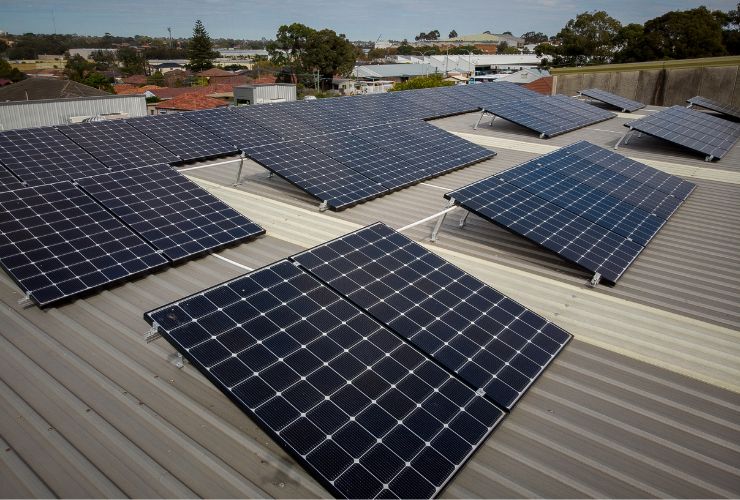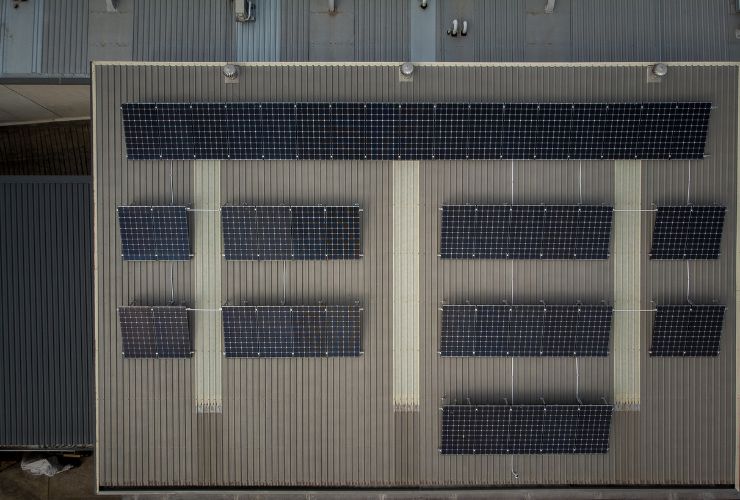Fast read
The amount of electricity generated by a solar system varies based on several factors such as location, orientation, quality of panels, inverter type, and cleanliness.
The majority of a system's value comes from reducing electricity bills and utilising feed-in tariffs where excess energy is fed back into the grid for compensation.
The average feed-in tariff is between 5 to 12 cents per kWh. A 6.6 kW system producing on average each day 4 kWh per kW is capable of generating roughly 26.4 kWh on a sunny day and producing around 240,900 kWh over its 25-year lifespan.
If 70% of the electricity is utilised for reducing electricity bills and 30% is fed into the electricity grid, the system can generate $43,843 in energy bill savings and $5,782 in income for exported electricity over its entire life cycle.
How much energy should I expect my solar panels to produce?
The energy your solar panels produce over time is super important for deciding if your investment pays off in the long run. When you get solar panels, you want them to keep working well for many years. But there are a bunch of things that can make them not work as well as they should over time.
One significant factor that affects how well solar panels work over the years is degradation. This means they slowly become less efficient because of things like being out in the sun all the time, changes in temperature, and just regular wear and tear. As they degrade, they don’t make as much energy, which can affect how good of an investment they are.
Another thing to think about is the quality of the solar panels and the parts that come with them. If you invest in exceptional panels and equipment, they’re more likely to last longer and work better. But if the materials or parts aren’t that great, they might break down faster and not work as well, which can cost you more in the long run.
Also, things like shade from trees or buildings, dirt building up on the solar panels, or not installing them properly can all make your solar system work less efficiently. If sunlight can’t reach the solar panels or they get dirty, they won’t make as much energy. And if they’re not set up right, they might not work as well as they could.
Solar system size
The size of your solar system significantly impacts the amount of electricity it generates. Put simply, a larger system equates to greater electricity production.
However, your roof size acts as a crucial constraint. The available roof space determines the potential solar PV system size and the number of solar panels you can accommodate. To optimise your solar system’s electricity output, it’s vital to utilise as much roof space as possible for solar panel installation.
Maximising roof space not only enhances energy production but also improves the energy efficiency and effectiveness of your solar investment. By fully utilising available roof space, you can capture more sunlight and derive greater benefits from your solar installation.
Roof angle
The angle of your roof greatly influences how much energy your solar panels will produce. As solar panels produce energy from sunlight, the more direct sunlight they receive, the more electricity they will produce. In Australia, most roofs are pitched between 15 and 22.5 degrees. As a general calculation, 22 degrees is the optimal angle for solar panels in Australia, but as we are an exceedingly large country, these numbers do vary.
If your roof is within the recommended range, there will not be a noticeable drop in electricity production. However, if your roof is flat, the energy your solar panels produce annually will decrease by approximately 15% and more in winter.

Orientation of the solar panels
The direction that your panels face will also have a significant influence on how much electricity is produced. In Australia, north-facing panels will be the most efficient. Your solar panels will produce approximately 13% less energy if facing East or West, with a further drop off if facing South, to around 35% less in production than a panel pointing true North. So please remember a South-facing roof will produce only around 60 to 65% of your north-facing roof output.
Solar panel quality
Like most products, the higher the quality, the better the performance. High-quality solar panels perform better in low light and in temperatures over 25 degrees Celsius. They can convert a higher percentage of light into electricity.
This is consistent across all weather conditions too. Higher-quality panels will also degrade slower than low-quality solar panels. This means they will produce more energy over the decades. When purchasing panels, get them from an established and well-trusted company, not via a Facebook price beater.
Cleanliness of panels
Solar panels are exposed to the environment 24/7. Therefore debris can and will gather on the solar panels, as well as dust and residue, decreasing their ability to produce energy. The cleaner your solar panels are, the more electricity they will produce. A good rule of thumb is to have your solar panels professionally cleaned at least every 1 to 2 years.
Shading
As solar panels produce energy from sunlight, any shading will reduce efficiency and output, costing you money. If any trees, buildings or other obstructions cause shading on a panel, the amount of electricity it can produce will decrease.

Location
Your location will also dictate how much energy your solar panels will produce. This is mostly because of different climates, sun intensity, and overall sunlight hours. Below is a comparison of the average daily production of 1 kW of solar panels across major Australian cities and landmarks such as Alice Springs.
How much energy should you expect from the life cycle of a solar panel?
To find how much energy your solar panels will produce over their life cycle, follow along with these calculations. For our example, we will use a standard 6.6 kW system.
In our example we also assume that our north-facing solar panels on a standard pitched roof produce about 4 kWh of electricity per kW the system is rated.
For our example, therefore on average, the system will produce about 26.4 kWh daily.
Now we move to the life span and annual degradation of the system. Today’s industry standard is that a solar system will last 25 years, with a first-year degradation of 2% and an annual degradation of 0.35% for the next 24 years. For our example system, this would result in a total production of 228,625 kWh of electricity over its lifetime.
While this is a complex calculation, when finished, you can also find how much you will save during the life cycle. In Australia, the average cost of electricity is 35 to 40 cents per kWh. Therefore, for every kWh your system produces, you are saving 35 to 40 cents.
Furthermore, for the electricity that you do not use, you can be paid a feed-in tariff (FIT). Let’s say your FiT in our example is 10c.
A sample calculation for a solar-only system
Assuming that we use 50% of the power our example system produces and save 35c per kWh, the calculation will be 228,625 times 0.5 times 0.35 which equals $40,009.
For the remaining 450%, we would receive 10c per kWh from the FIT. We can find this revenue through the calculation 228,625 times 0.5 times 0.1 which equals $11,431.
Adding these together would save you $51,440 over 25 years.
You now want to deduct $3000 for maintenance and inverter repairs/replacements. Then you can calculate the overall net benefit solar will generate for you, your family and your business.
Please note these figures do not apply specifically to your PV system but have been spelt out to show you how beneficial solar can be.
So you can use these calculations to find how much you will save over the life cycle of your solar system. So while you cannot find the exact amount of energy your solar panels will produce during their life cycle, you can now ensure you get the most out of it by knowing what affects its production and potentially finding how much you will save.



